The term “The Left Hand Path” is used today so often, and sometimes without any excuse and regarding to disputable exoteric doctrines, that its meaning and core are clouded from view and understanding. It is even more difficult to talk about the Left Hand Path in Odinism, because this manifestation of the German-Scandinavian Tradition is extremely young and therefore it is under all kinds of influences and infiltrations of the many extravagant ideas. A detailed analysis of the phenomenon of the Left Hand Path was conducted in the second volume of our fundamental work “Polemos”[1], below we will try briefly to summarize the main points in the light of the pagan traditionalism.
It is known that in antiquity the Germanic-Scandinavian Culture and Tradition did not know the division into the Right Path and the Left Path, as there were no special cults and practices of veneration of the Fury and Dark hypostases of the Gods, akin to Vedanta and Tantrism in Hindu traditions. The focus of Sacredness, which only later became possible to “divide” into the solar-martial (the Right) and twilight-ecstatic (the Left), is the figure of ás Odin and the Odinic cult. The cult of Odin embodies the holism of the World of Tradition. The axis of tension lies between the Gods (Aesir) and the Titans (Thurses and Jotuns), which is perfectly described by F. G. Jünger on the example of Greek mythology.
The discourse of the Left Hand Path in Odinism (more broadly in Asatru or the German-Scandinavian tradition as a whole) appears in the 20th century and most likely it is rooted in Western esotericism and hermeticism, the alchemical doctrine of the three stages of Magnum Opus and also influenced by the eastern darshans under the common name Vamachara (literally: the Left Hand Path in the Hindu). To date, Odinism clearly we can identify several mainstream currents, which are called the Left Hand Path. But first of all, it is necessary to name the main provisions of the Left Hand Path through the prism of traditionalism and highlight the structural theses that make this way distinctive and distinct from others, and also allows us to distinguish LHP in other traditions. In many aspects this structure is based on advaita-darshanas, as the most ancient and developed teachings of the Left Hand Path in the bosom of the Indo-European peoples. Also we especially want to emphasize the role of the traditionalist philosophy of J. Evola (“Ride the Tiger”, “The Metaphysics of Sex”, “The Hermetic Tradition: Symbols and Teachings of the Royal Art”, etc.) and F.G. Jünger (“Griechische Mythen”), etc., which gives us methods and values in the work on the development of the Left Hand Path in the era of Ragnarok.
The structural provisions of the LHP are as follows:
- Recognition that mankind and the universe is in a state of decline: Kali-Yuga, Ragnarok or Iron Age. Cosmos and mankind are a dying hearth and a decaying corpse.
- Nonconformity of behavior, ritual practice and aesthetics. Simultaneously with reliance on the meaning and essence of past forms, but in the light of radical rethinking of them or denial.
- Transgression as a spiritual imperative to overcome any duality and in spite of the alienating and dying of the universe. If “God is dead” (Nietzsche), then the adept of the Left Hand Path puts the practice of imitatio Dei at the center of attention and focuses his attention and mind on the practice of dying, the existential experience of one’s own death (death of the false-Self as social person; Nigredo) and the death of the surrounding universe, leading to harmony and integrity of the internal and external experience of Death.
- The non-duality between God and man in “death” (because death is an illusion) of the world, man and God.
From the last point begins one of the definitions of the Left Hand Path in Odinism in the West (Europe and the USA). The millennial of Christian culture and several centuries of Cartesianism of the Enlightenment laid the deep subject-object distinction in the consciousness of the European man. A typical definition of the Right Hand Path in the West is the practice of “worshiping and praying to God” on behalf of a person who is different in nature and status than God. Therefore, the characteristic of the LHP is the formula “do not bow before God, but become God”. But the problem is that this is not a primordial problem in paganism, but a problem imposed by the difference between the Gods and man in Christianity and the later difference between the subject and the object of Descartes, which underlies modern thinking. For the pagan worldview the difference between man and society, between man and Gods, man and the world is absent, everything is interconnected and built into the hierarchy of emanations. The world is a space of wonder and metamorphosis, permeated with the rays of the Divine Light. Therefore, when the Western school of the Left Hand Path in Odinism begins with the thesis that “they will not worship God but become God”, as S. Flowers or S.A. McNallen says, this is not yet the Path of the Left Hand, but only the restoration of the essential pagan position of things. Of course, for a modern post-Christian situation in the West, such a slogan is a bold nonconformism, but this is only the first step to improving the situation and thinking.
The other root of the the Left Hand Path in Odinism is Vamachara through the prism of traditionalism and structuralism. Vamachara’s influence on Western Odinism is less noticeable. More clearly seen in some Europe and our own teachings of the Left Hand Path, which we previously stated in the book “Gap. The Left Hand Path to Odinism” (Fall of Man, 2017). In this regard, you can hear a logical objection that with the use of Asian doctrines, the European – the Northern one – essence of Odinism is lost. On this score, we would like to quote another text in which we give a concise answer to this claim:
«I see the situation in the following way. You do not need to borrow the external forms from Tantra as invocations, names and images of the Gods. You do not need to borrow the structure of rituals and ceremonies, it’s a achievements and the manifestations of a purely Indian culture. More benefits can come from comparing the mythology and the gods, but it is not the deepest way.
It is enough to take from the Tantras the most fundamental and basic provisions; they often fit into one sentence or two or three words. For example, the “idea of non-duality” (Advaita) or “divine monism”. There is no need to take anything, but the ideas. The next step should be to search for the roots and the possibility of the disclosure of this idea in the space of European thinking and traditions. This is hugely aided by Plato, neo-Platonism, and some Christian mystics. For example, having plunged into the study of Meister Eckhart and Johannes Tauler, I found a great similarity in their teachings about finding the God within and the hierarchy of the people in the Tantras (Pasha-Vira-Divya). All we need is already within Hellenic and Germanic ideas, their philosophy and traditions. Our task is to free it from the accretions of Christianity, secular modern science, humanism, the idea of progress and so on. Then it should be brought into harmony and learned as language, and in this space of Hellenic-Germanic philosophical language we can express similar ideas to those of the Tantras that are absolutely complimentary to the European way of thinking, its culture and external forms»[2].
Another unobvious division among all the modern teachings of the Left Hand Path in Odinism and those who pretend to be such. We can conditionally divide the Path of the Left Hand into two levels: High (aristocratic) and operational (magical).
The first way is focused on spiritual realization or Divine Self-realization beyond all forms, names and descriptions of this state (apophatic Sacred or Plotinus ἕν). This is the path of inner doing, for which the shamanistic and transgressive, Odin’s night practices, associated with the death and non-duality of his figure as a warrior-king and supreme goði-shaman, act as a guide.
The second way is focused on the horizontal realization of magical skills and on the achievement of goals and benefits in this world, using the transgressive and dark practices of magic, invocations and sacrifices. This path includes any magic, and especially the magic of chaos, sexual magic, necromancy, etc. These aspects are very attractive to esoteric people and people whose spirit is not too strong for the High Path of the Left Hand in Odinism. And also it is attractive for all sorts of rascals, unfortunately. Still below this path, but as its component part, there is a pure worship of the titans – thursathru, rökkatru, etc. Teachings, which can be called “Satanism in Odinism.” These exoteric teachings are very common in the West (R. Caldera as a vivid example) and often connect with pseudo-initiating occult organizations like Thelema, the cult of Set and the same way simulacres. W. Grimsson emphasized the great influence of this degenerate esotericism in strengthening the subject-object dichotomy in the Left Hand Path, contrasting this with the holism and advaita of the East or pagan antiquity[3]. The path of worshipping of the titanic forces is the opposite of the way of Deification, but in the aesthetic and transgressive aspects it can be in some way close to the Path of the Left Hand.
A separate case is the phenomenon of Loki’s figure in the German-Scandinavian Tradition. It is known that in ancient times there were no cults of this titan. Complexity begins with the definition of whether he was an ás or an jotun? Or he, like Prometheus among the Greeks, until some point stands on the side of the Gods, but then rebels against the Divine order and betrays them? The common features of myths allow us to affirm the second position. Firstly, Loki is a trickster, God of cheating, but later he discloses as a titan of lies and deceit. For the Left Hand Path in Odinism, in the center of which stands the Odinn-the-Allfather, Loki appears as his Shadow or a titanic double (in the myth they are twinned). Today there are attempts to build a cult of Loki, but almost all of them are cheap imitations and simulacra, inspired more by the waste of film production based on comics and wiccans, than serious insights into the essence of this most complex figure in the German-Scandinavian tradition.
Finally, the Left Hand Path has prospects to reach new horizons connected with not only traditionalism, but the philosophy of language, as C. Cleary and S. Flowers do, mastering the poetry as M. Heidegger saw it. This, in particular, will be devoted to our upcoming book “Forthcoming and Encirclement”, which will be published in Russian in the autumn.
Askr Svarte
06.2017 era vulgaris
[1] Askr Svarte “Polemos. Языческий Традиционализм”, в двух томах, “Велигор”, 2016г. (In Russian language)
[2] An interview for Fall of Man, 2017.
[3] W. Grimssons article “Some Preliminary Comments on the Difference between the Left Hand Path in the West and Pre Christian and Heathen Models”.












